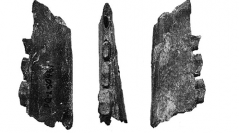

 Comptes Rendus Palevol
4 (8) - Pages 715-726
Comptes Rendus Palevol
4 (8) - Pages 715-726Fossil teeth and bones of aardvarks are relatively common at Langebaanweg, an Early Pliocene site in western Cape Province, South Africa. The remains are compatible in size and most details of morphology to extant Orycteropus afer, and are the earliest fossils attributed to this species. Other Late Miocene to Early Pliocene localities in Africa have yielded smaller species of aardvarks, suggesting that the extant lineage evolved in southern Africa. Morphologically the genus Orycteropus has been remarkably conservative since at least the Early Miocene but it witnessed an overall increase in size through the Neogene. The species O. afer has been morphometrically stable since the Early Pliocene. These observations indicate that the evolutionary process in aardvarks is extremely bradytelic.
Orycteropus, Tubulidenta, Mammalia, Early Pliocene, South Africa